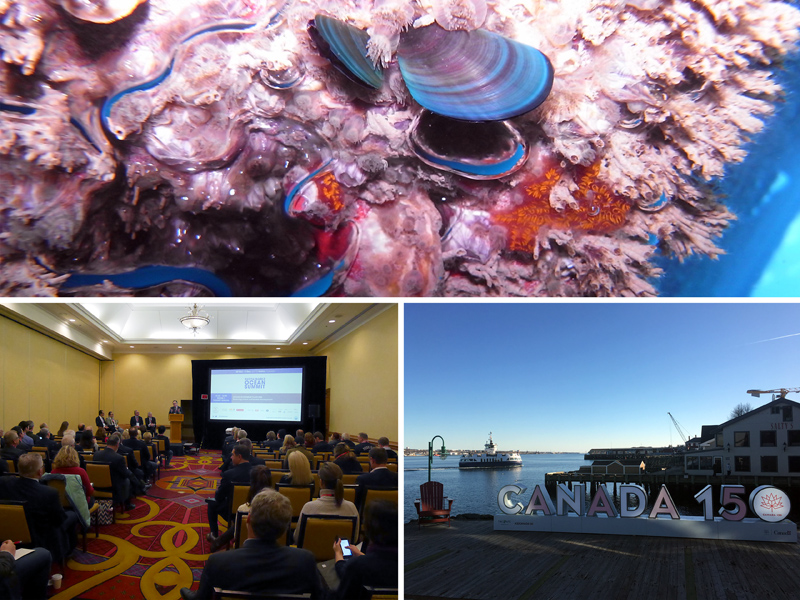All ships can experience a build-up of aquatic organisms on their underwater hull and structures, which is known as biofouling. This can impact on the ship speed and energy use, and also potentially see aquatic organisms transferred to new areas, where they can become invasive species.
To help address this threat, the IMO team preparing the new GloFouling project has taken part in the Sustainable Ocean Summit in Halifax, Canada (29 November – 1 December) where industry-led solutions to ocean sustainability challenges were being discussed.
The event brought together representatives from the ocean business community, including shipping, oil and gas, fisheries, aquaculture, seabed mining, tourism, renewable energy – as well as participants from the maritime legal, financial and insurance communities.
As part of the Summit, the GloFouling preparation team, represented by John Alonso, also collaborated with the World Ocean Council (WOC) to organise a parallel session on “Biofouling and Invasive Species: Addressing the Threat through Industry Collaboration”. Here, participants learned about the main features of the GEF-UNDP-IMO GloFouling project and discussed how ocean industries can engage with international organizations and governments to be part of the solution to marine biofouling.
Engaging industry and academia to find new solutions to biofouling is a key feature of the GloFouling project, and part of IMO’s on-going work to support the Sustainable Development Goals – particularly SDG 14 on life below water.
